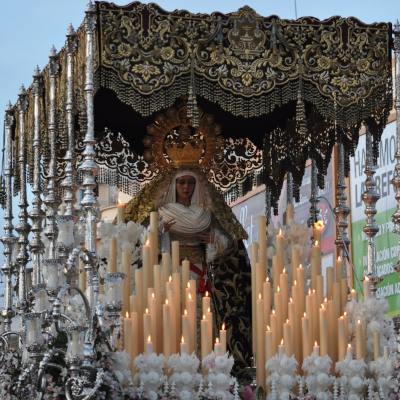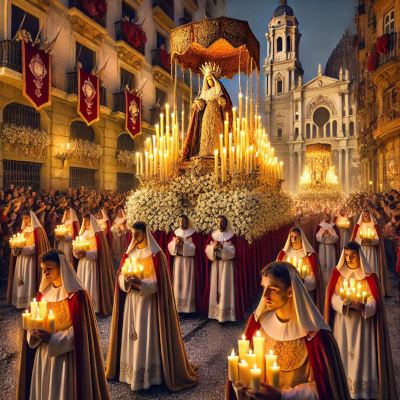Semana Santa: The Holy Week in Spain
As you may already know, Spain is a country where Catholicism plays a significant role. Semana Santa, the week before Easter (Pascua), is one of the most important religious periods of the year in the country. Literally, Semana Santa means “Holy Week,” and it is a time when cities are filled with impressive processions, religious rituals, and emotions.
 But what is Easter, and why is it celebrated so grandly? Here’s a quick refresher:
But what is Easter, and why is it celebrated so grandly? Here’s a quick refresher:
- Maundy Thursday (the Thursday before Easter): A remembrance of the Last Supper of Jesus with his disciples.
- Good Friday: The day the Church remembers that Jesus was scourged, crucified, and died on the cross. His death is seen as the moment of redemption for mankind, making this the saddest day of the year.
- Holy Saturday: The day when we remember that Jesus stayed in his tomb.
- Easter Sunday: The day Christians celebrate that Jesus rose from the dead – a symbol of new life and the arrival of spring.
In Spain, all these events come together in a grand celebration. During Semana Santa, the Passion of Christ is told through the processions that wind through the streets. But how exactly does it all unfold?
In many Spanish cities, the brotherhoods (cofradías or hermandades) take the lead. These brotherhoods prepare all year for Holy Week. Each brotherhood has its own distinctive clothing in various colors and organizes processions that often last for hours. These processions remember the suffering of Jesus.
What stands out most about these processions is the way the religious statues are carried. The platform, on which an image of Jesus is often placed, is carried by hundreds of people. The image of Jesus himself is often simple and modestly decorated, inviting reflection.
 Behind the image of Jesus, there is usually an image of the Virgin Mary. In contrast to the image of Jesus, the Virgin Mary's statue is richly adorned, surrounded by flowers, candles, gold, and silver. It is often shielded by a canopy and evokes strong emotions. During the procession, you will often hear saetas, lamentations, as the Virgin Mary statue passes by.
Behind the image of Jesus, there is usually an image of the Virgin Mary. In contrast to the image of Jesus, the Virgin Mary's statue is richly adorned, surrounded by flowers, candles, gold, and silver. It is often shielded by a canopy and evokes strong emotions. During the procession, you will often hear saetas, lamentations, as the Virgin Mary statue passes by.
But why do people carry these heavy statues? For many Spaniards, carrying the statues is a form of penance, but it is also a great honor. The statues are carried by costaleros (image bearers). They walk under the statue, hidden by cloths hanging along the sides. Since the bearers cannot see, they are guided by a capataz, who navigates them through the often narrow streets.
The different religious statues represent various moments in the life of Jesus or Mary, or important biblical stories and attributes. The Passion of Christ is continually recounted during Holy Week in the processions.
Whether you're religious or not, Semana Santa is an experience you shouldn't miss if you're ever in Spain. The intense emotions, traditional rituals, and impressive atmosphere make it a unique event.
If you happen to be in Málaga at Easter, look up "routes Semana Santa Málaga" and choose a procession to attend. It’s an experience you won’t soon forget!



